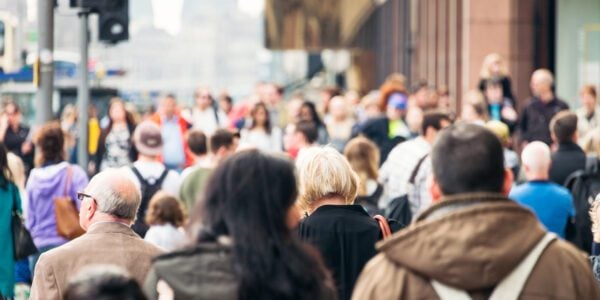A new study from the University of Oxford and the University of Newcastle, Australia has found that while changes to religious diversity may lead to a short-term decrease in quality of life for communities, this is reversed in the long term as societies adjust to multiculturalism.
The most in-depth analysis to date of religious diversity’s effect on societal well-being, the Nuffield-funded report uses survey data from more than 100 countries collected over 22 years and finds that:
- In the short term, humans react negatively to changes in religious diversity, experiencing a dip in quality of life.
- However, humans adapt to changes in society over time and begin to reap the benefits of diversity, with quality of life returning to normal levels.
- Negative effects of diversity are mitigated due to the positive effect of increased mixing between different groups.
- The negative effects of religious diversity dissipate within four to eight years, because they are cancelled out by the positive effect of mixing between different groups.
As demographics have changed because of increasing globalisation, societies around the world are transforming from religiously homogeneous groups to increasingly diverse communities. Researchers have performed the most thorough analysis to date on the effect of religious diversity on human well-being, uncovering a transformation process common to countries around the world. The report is published in PNAS.
“Our findings demonstrate that, in the short term, we are inclined to react negatively to changes to religious diversity in our societies,” says study co-author Dr Miguel Ramos, from the Department of Experimental Psychology at the University of Oxford. “However, as society begins to reap the benefits of diversity, and trust between different groups grows, this negative effect on well-being disappears.”
Humans have evolved to react negatively to threats to homogeneity, as our survival was dependent on cooperation and cohesion with those belonging to our ‘in-group’, protecting each other from potential dangers presented by unknown others in the ‘out-group’.
Study co-author Professor Miles Hewstone, also of Oxford’s Department of Experimental Psychology, says: “In the short term, changes in diversity may have a negative effect, such as a reduction in trust of our neighbours, and of out-groups in general. But in the longer term, over a few years, we can see how societies and their respective groups come to terms with new demographic challenges.
“By focusing only on the short term, we draw an inaccurate, pessimistic conclusion about the impact of diversity. An increase in diversity offers the opportunity for members of different groups to engage in intergroup contact, to get to know each other, and to cooperate. When this occurs, this positive contact-increasing effect of diversity trumps the negative, trust-decreasing effect of diversity.”
Professor Hewstone adds: “Previous studies have lacked or not exploited data with the longer-term perspective analysed here, and it is crucial to see intergroup relations – whether conflict or cooperation – not in static terms, but in dynamic terms.”
A major concern highlighted in the study is the vulnerability of communities to populist and nationalist messaging during the four to eight-year transition period. “During this period, anti-diversity narratives will be particularly powerful, given that they will trigger some of our most basic human instincts,” says Professor Hewstone. “Responsible politicians should be taking care not to prey on this vulnerability, and instead focus on encouraging trust and tolerance in their electorates.”





















































